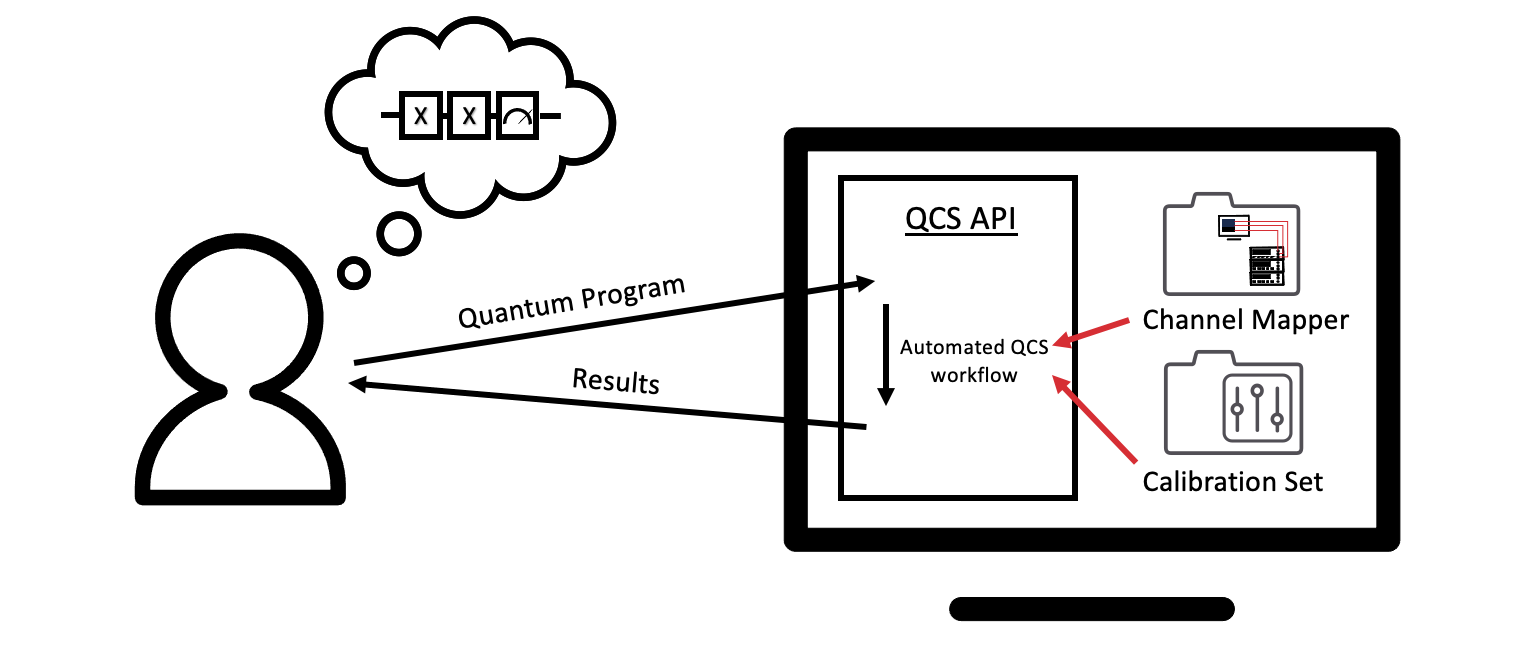Working with QCS hardware
A typical Keysight’s Quantum Control System workflow consists of the following steps:
Define the hardware configuration of the system using a
ChannelMapper. See Channel mappers for a guide on this step. Alternatively, download and modifychannel_mapper.pyfor a quick setup. Note that this step and step 2 are typically implemented as a single line to import existing configurations after initial setup is complete.Create a list of calibration parameters using a
CalibrationSetthat defines the operations (waveforms/gates/acquisitions). Runcalibration.pyto generate aCalibrationSetor downloadcalibration set. See Managing calibration data and linkers for a guide on managing the parameters and operation definitions.Assemble the operations into a program representing the experimental sequence. See Program basics for a basic guide on writing a quantum program from scratch. See Experiments to use existing experiments for calibration.
Execute the sequence and analyze the results.
After ChannelMappers and a
CalibrationSet is set up, a typical implementation
with Keysight’s Quantum Control System will take the form depicted below. Users specify the program they want to
run, usually as a Program, and Keysight’s Quantum Control System then
compiles the program into a form that can be executed on hardware. The compiled
program is then executed, and results are returned.

Guides
Hello hardware
This guide gives a walkthrough of how to get set up to run on hardware. It can be thought of as Keysight’s Quantum Control System's “Hello quantum world!”
Channel mappers
This guide shows how to use channel mappers. Channel mappers are used to specify how Keysight’s Quantum Control System's virtual channels map to physical channels on hardware.
Sweeping program variables
This guide shows how to sweep variables in programs.
Multiplexing RF waveforms
This guide shows how to create multiple virtual channels and link them to a single hardware channel for multiplexed control and readout.
